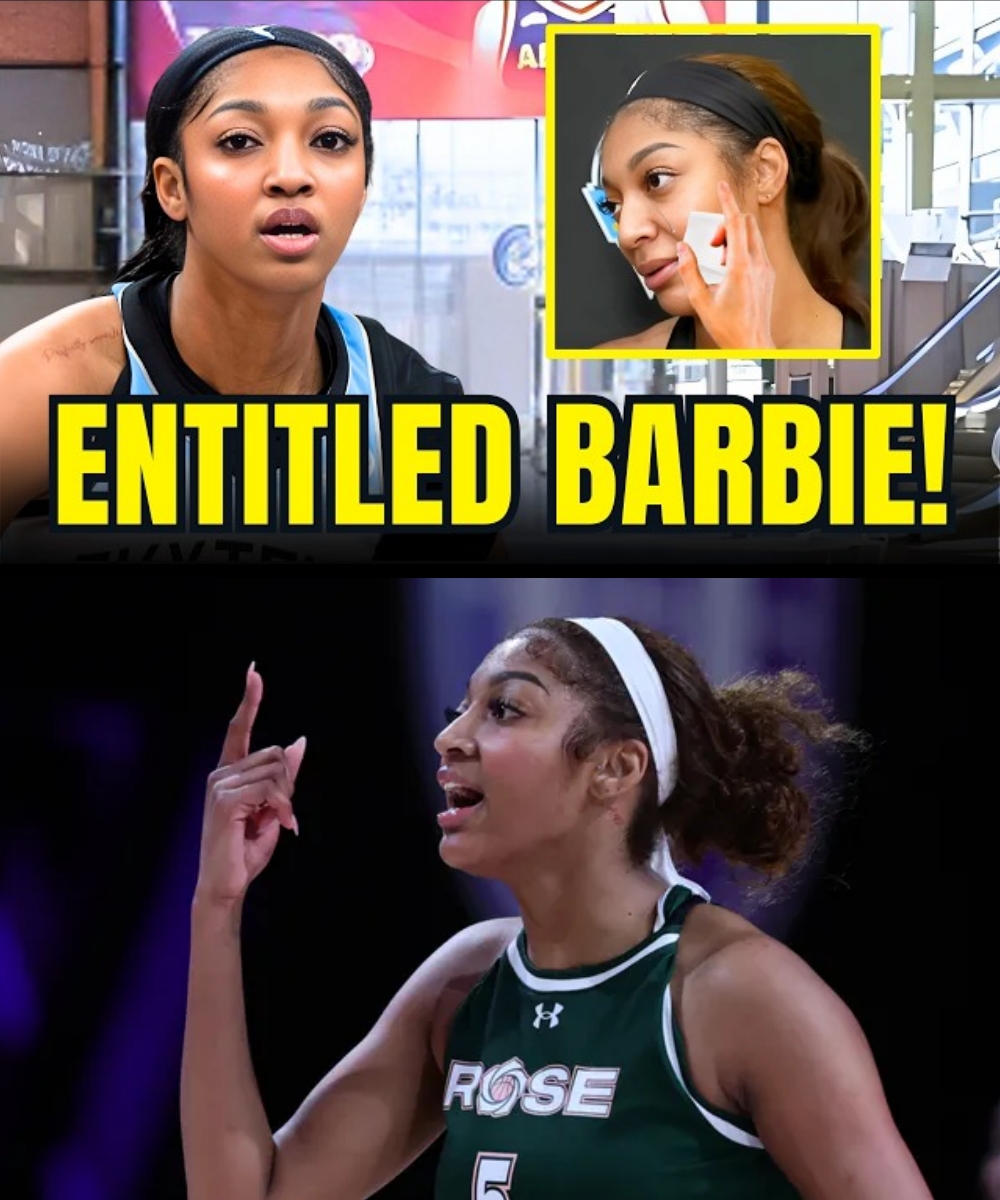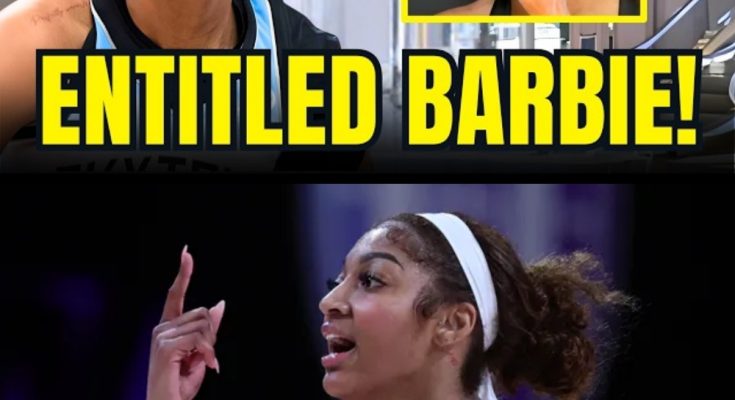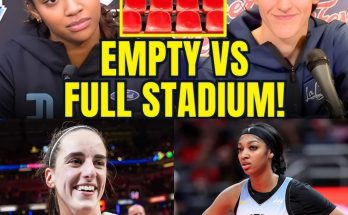
Angel Reese’s Salary Demands Highlight WNBA’s Financial Reality Amid Caitlin Clark’s Meteoric Rise
The WNBA is currently at a crossroads, facing both unprecedented attention and renewed scrutiny over its financial structure. Central to this conversation is Angel Reese, a rising star whose recent demands for higher pay have sparked instant backlash and ignited debate about the league’s future. Reese’s calls for million-dollar salaries come at a time when the WNBA is experiencing both a surge in visibility—thanks largely to Caitlin Clark—and a persistent struggle with profitability.
Recently, reports surfaced indicating that several WNBA players, led by figures like Angel Reese, are pushing for NBA-level compensation, with some even threatening to strike if their demands aren’t met. This bold stance has drawn both support and criticism, especially given the league’s financial track record. The WNBA, despite its 30-year history, has never turned a profit and continues to rely heavily on NBA subsidies and bundled broadcast deals. Last year alone, the league reportedly lost $50 million, raising questions about the sustainability of any significant salary increases.
Angel Reese’s outspoken approach has become emblematic of a new generation of players unafraid to demand more. However, this assertiveness is colliding with economic realities that cannot be ignored. The league’s recent $260 million broadcast deal, while impressive on the surface, pales in comparison to other professional sports contracts. For example, the NWSL secured a $240 million deal without NBA backing, highlighting the challenges the WNBA faces in generating independent value.
The financial underpinnings of the WNBA are complex. While the league is often packaged alongside the NBA in media rights negotiations, it receives only a fraction of the revenue. Of the reported $710 million in total revenue, the WNBA’s actual share is less than $300 million after splits with the NBA and private investors. Fixed costs, such as the $30 million annual expense for charter flights and rising payroll obligations, further strain the league’s budget. With the NBA owning a 42% stake and private investors holding 16%, the WNBA’s direct control over its own finances is limited, complicating negotiations for higher player salaries.
This backdrop makes Reese’s demands—and the threat of a player strike—particularly contentious. Critics argue that most WNBA players lack the bargaining power to justify NBA-level salaries. Unlike the NBA, where superstars routinely fill arenas and drive massive television ratings, the WNBA’s audience is smaller and more concentrated. The disparity in viewership is stark: while Caitlin Clark’s preseason debut drew an astonishing 1.3 million viewers, Angel Reese’s games have struggled to surpass 400,000, with some contests attracting fewer than 4,000 fans in attendance. This gap underscores the core challenge facing the league: star power is not evenly distributed, and not every player commands the same market interest.
The “Clark Effect” has become a defining narrative of the 2025 season. Clark’s arrival in the league has fundamentally altered the WNBA’s visibility and financial prospects. Her games are sellouts, secondary ticket prices have soared, and networks are eager to broadcast any matchup featuring the Indiana Fever phenom. This surge in interest is not merely anecdotal; it is measurable in ratings, ticket sales, and merchandise revenue. Clark’s impact is reminiscent of transformative figures in other sports—athletes whose presence alone redefines what is possible for a league.
In contrast, Angel Reese, despite her high profile and significant social media following, has yet to translate online popularity into tangible business results for the WNBA. While Reese is often featured in media campaigns and enjoys a prominent public persona, the numbers tell a different story. Attendance at her games lags behind Clark’s, and television ratings remain modest. This disconnect between perceived stardom and actual market impact is a central issue in the current debate over player compensation.
From a business perspective, sports leagues pay athletes based on the revenue they help generate. In the NBA, this model is clear: superstars like LeBron James command massive salaries because they drive ticket sales, merchandise, and television ratings. The same logic applies in the WNBA, but with a much smaller financial pie to divide. When players like Reese demand million-dollar contracts, critics argue that the league’s current revenue streams simply cannot support such payouts—especially when most teams struggle to fill arenas or attract significant television audiences.
The WNBA’s collective bargaining agreement (CBA) further complicates matters. Revenue-sharing targets are based on pre-pandemic attendance and revenue figures from 2019, benchmarks that the league has struggled to meet even with the recent boost from Clark’s arrival. The reality is that, outside of a handful of marquee matchups, most WNBA games do not generate the kind of viewership or gate receipts needed to justify dramatic salary increases.
Moreover, the league’s ongoing expansion adds another layer of financial pressure. New teams bring additional costs—charter flights, facilities, staff—without any guarantee of increased revenue. The risk is that expansion could exacerbate existing financial challenges rather than solve them.
The backlash to Reese’s demands reflects broader anxieties about the WNBA’s path forward. While players are right to advocate for better pay and working conditions, the league’s financial constraints are real. The support of the NBA and recent gains in visibility are positive signs, but they do not automatically translate into the kind of sustainable, independent business model that would support NBA-level salaries for all players.
For now, the WNBA’s future appears to hinge on its ability to capitalize on the momentum generated by stars like Caitlin Clark. Her unique ability to draw fans and viewers is driving up the league’s value, but replicating that success across the roster remains a challenge. Until more players can demonstrate similar drawing power, the league’s financial model will likely remain conservative.
In the end, the debate over Angel Reese’s salary demands is about more than just money. It is a reflection of the WNBA’s growing pains as it seeks to balance player advocacy with economic reality. The league’s success will depend on its ability to nurture new stars, grow its audience, and make the case for greater investment—both from sponsors and from fans. As the 2025 season unfolds, all eyes will be on whether the WNBA can turn its newfound visibility into lasting prosperity, or whether the gap between aspiration and reality will continue to fuel controversy.

